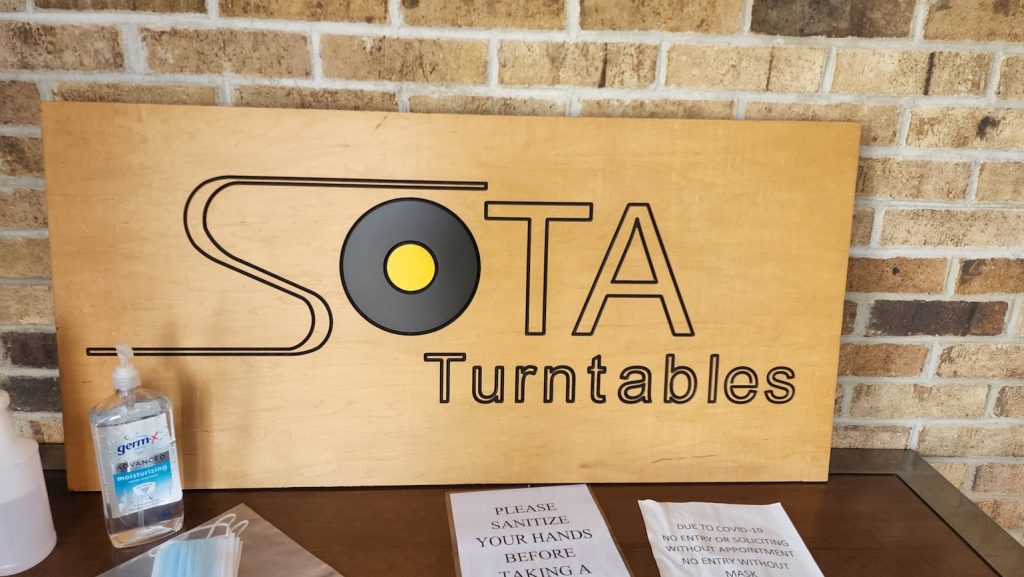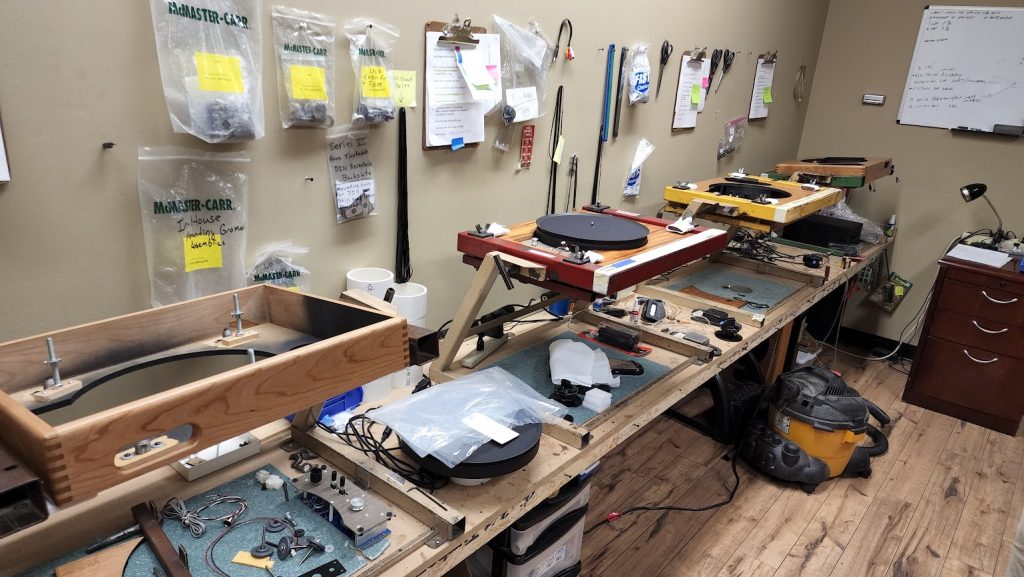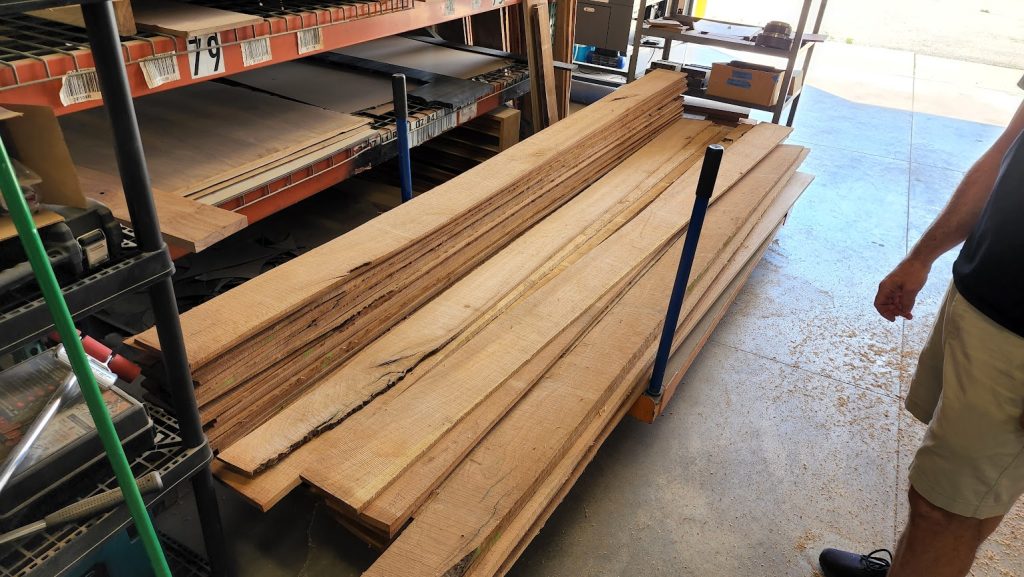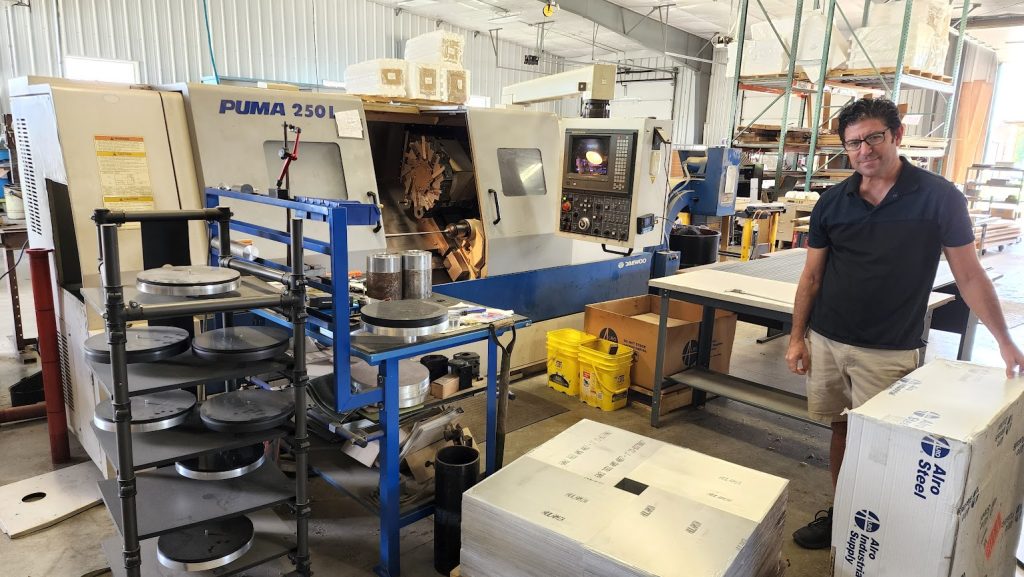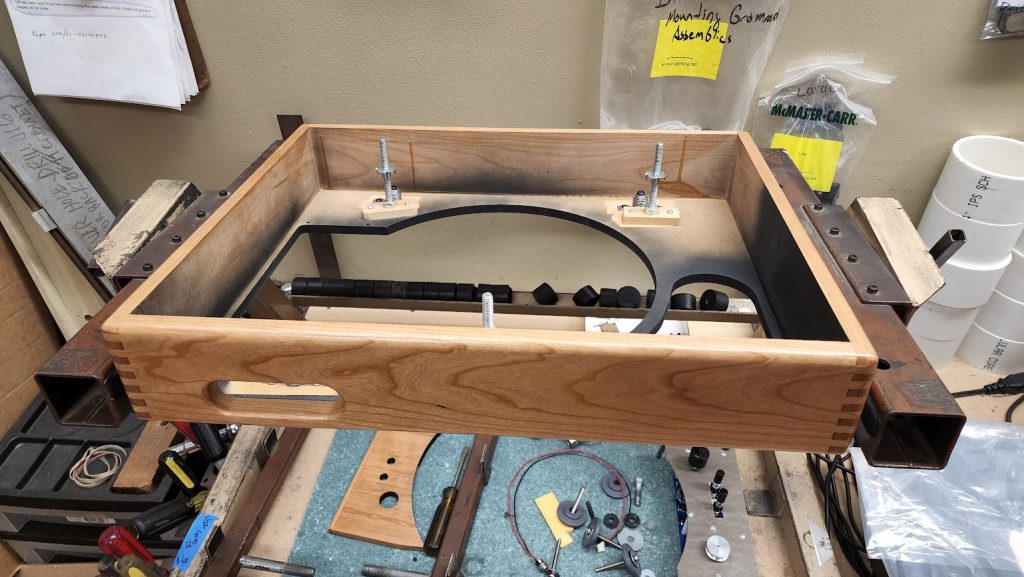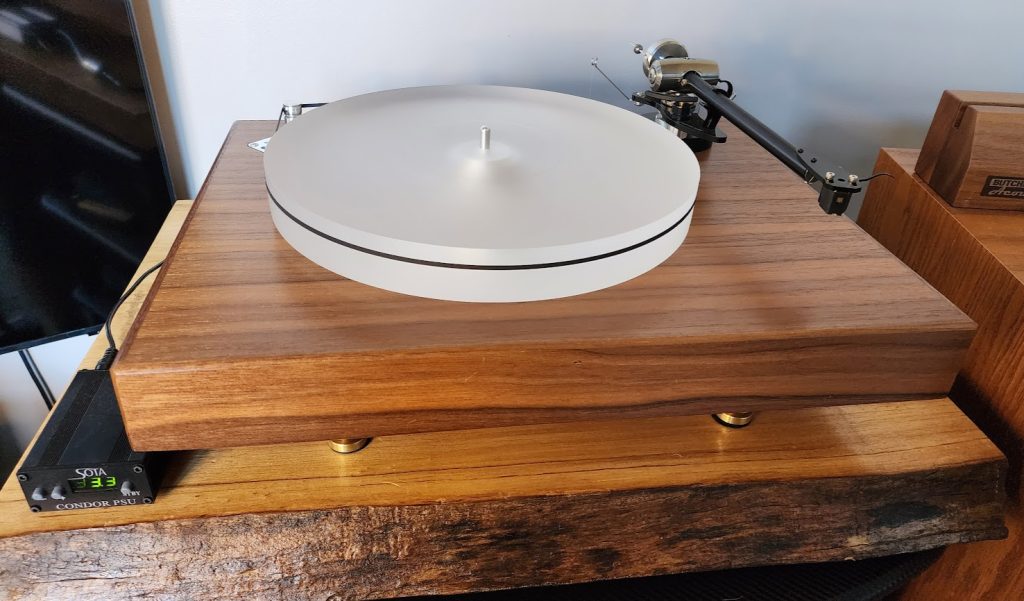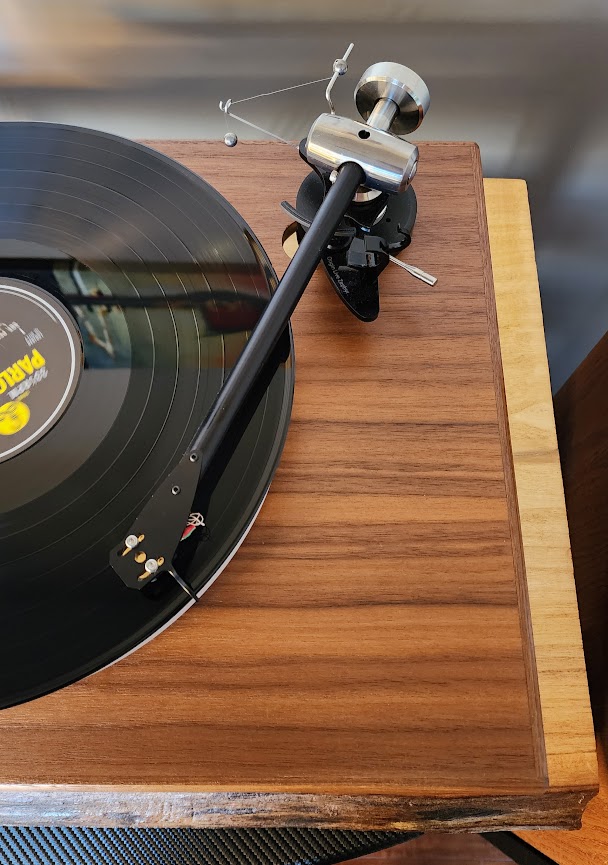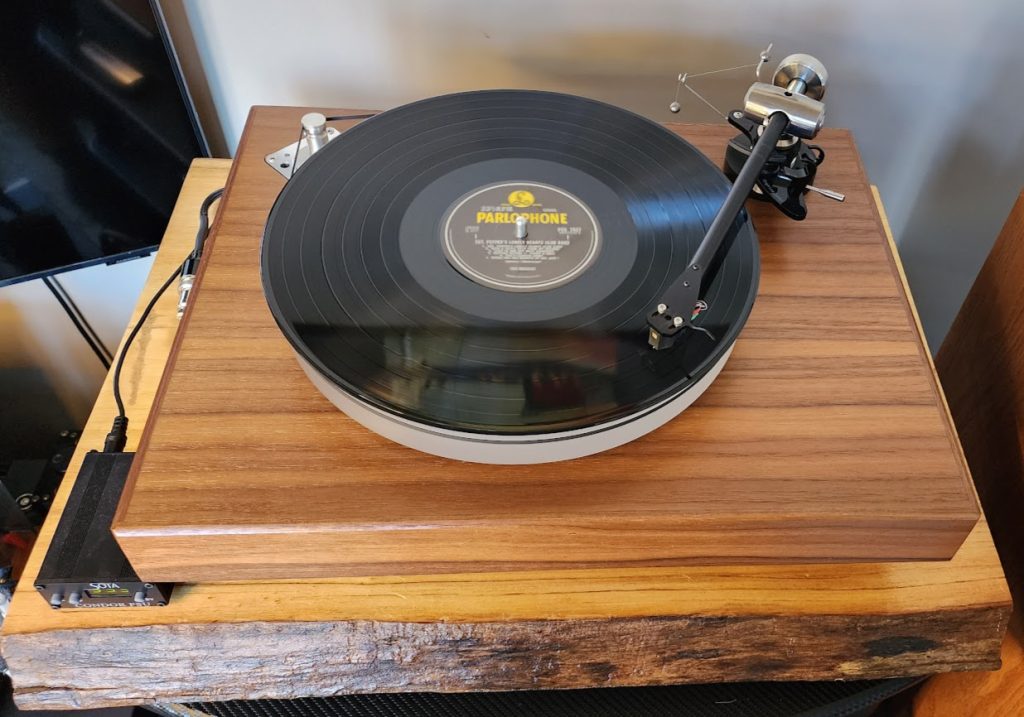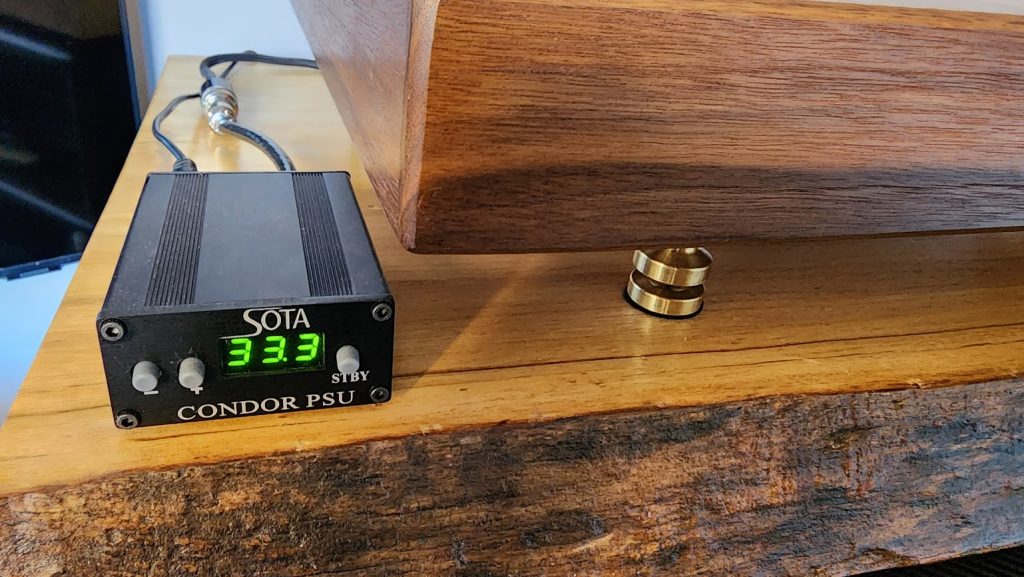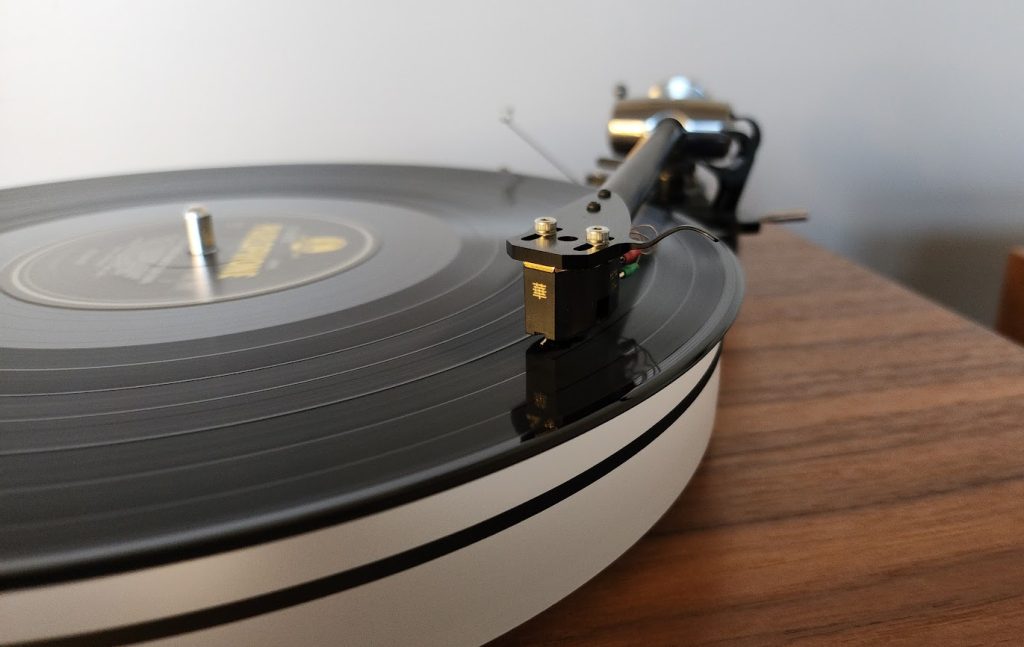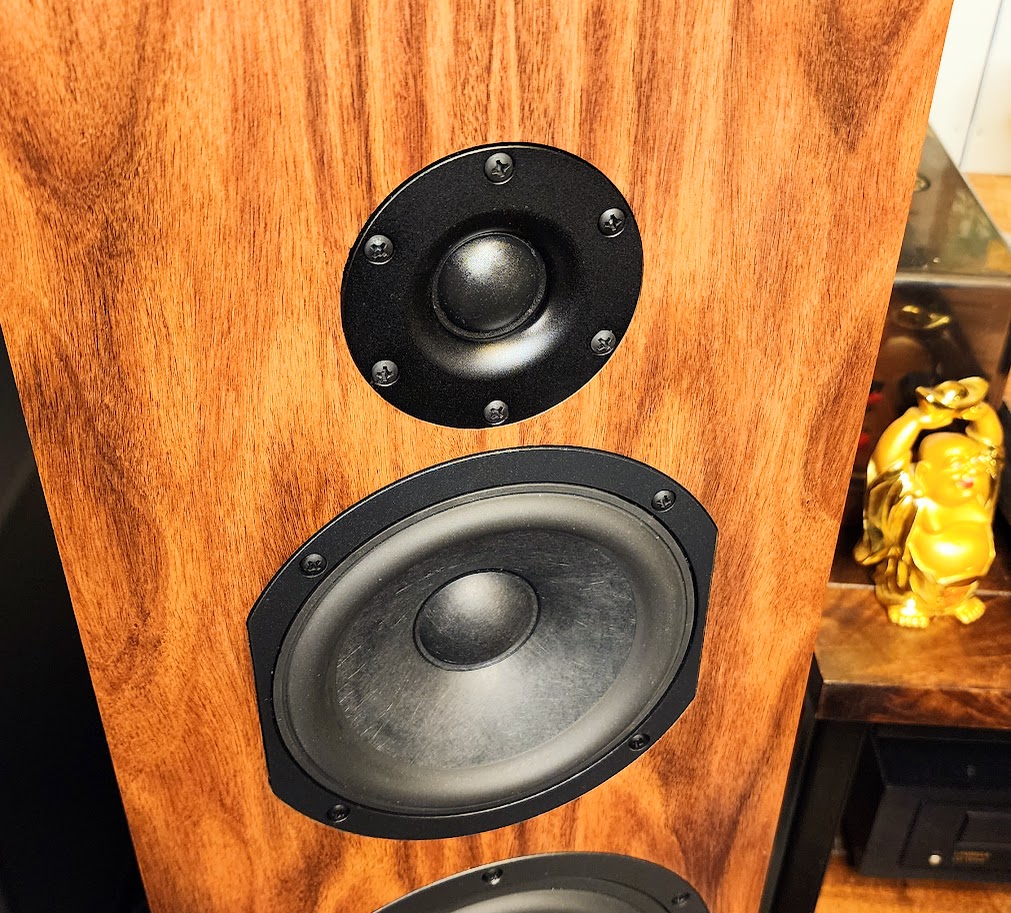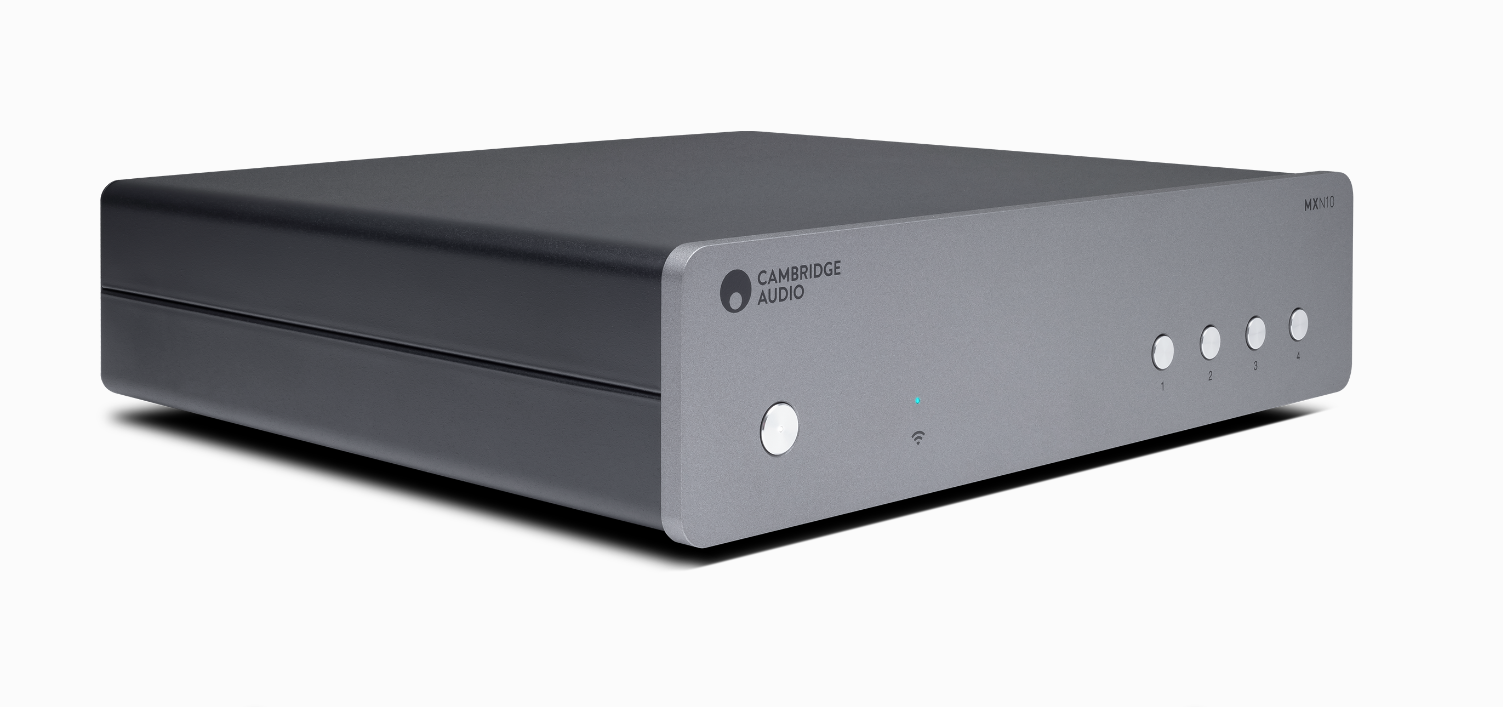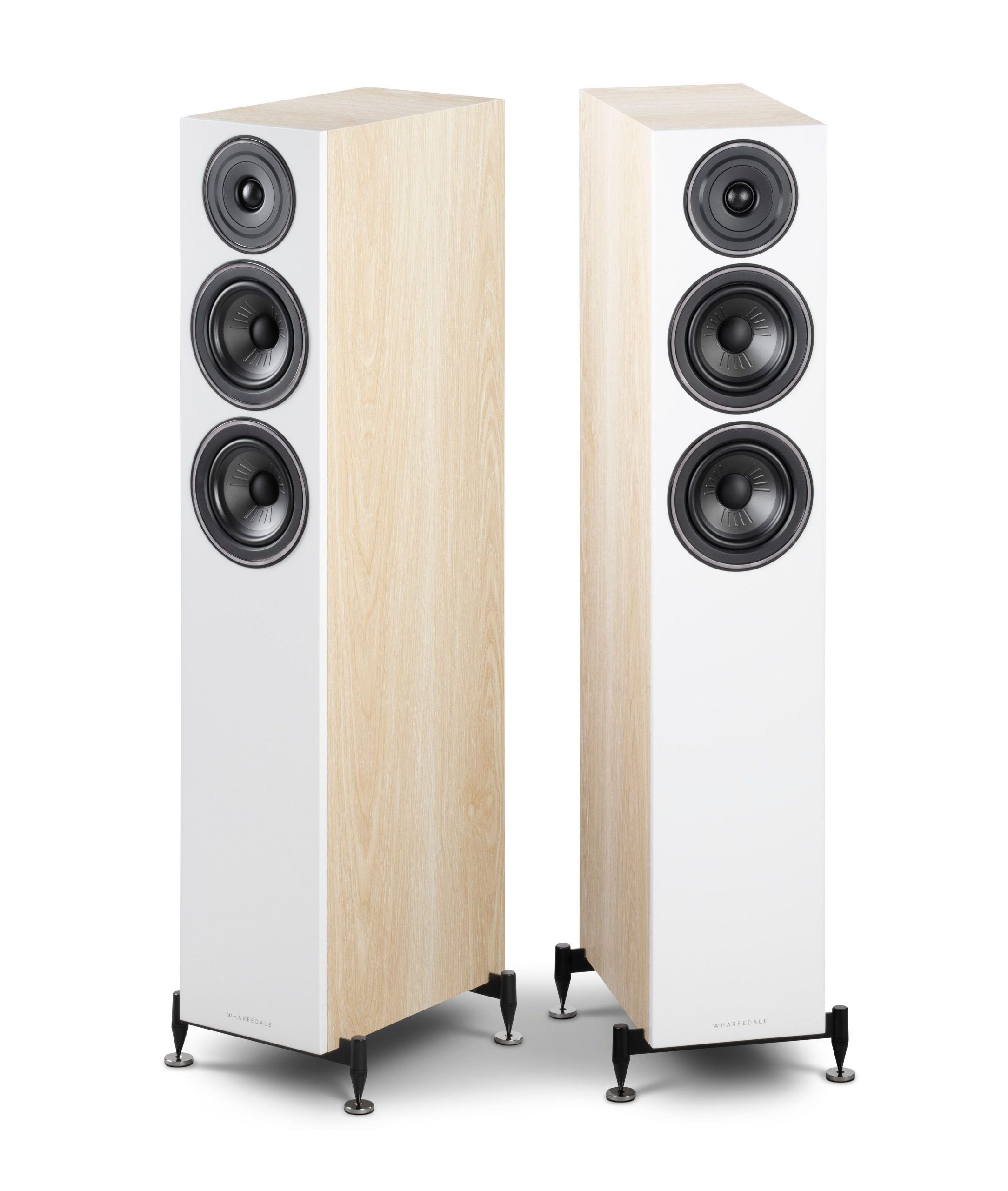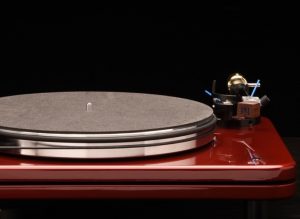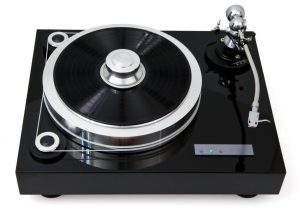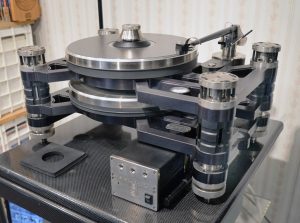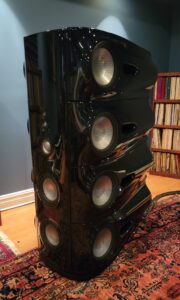Over the past several years, increasing emphasis has been placed on products made in the U.S.A., and moreover, those hand-crafted by artisans. Entire fairs have sprung up showcasing wares by craftsman and more attention is being paid to the sources of materials of each product. Whether it is the farm-to-table movement, or your daily deliveries, we want to know what we're getting, where it came from, and who made it. We care more than ever.
Last fall, I had the opportunity to drive up to Delavan, Wisconsin, the home of SOTA Turntables, and witness true local artistry at work. From the outside, the factory is unassuming, but once inside, I was stunned by the magnitude of just what goes into every SOTA turntable. Donna and Christan, two of the loveliest hosts I could ask for, took the time to show me around the facility.
After introductions with the friendly folks at SOTA, the tour began in the testing room. Hand cut and crafted plinths of walnut and cherry were on racks in various states of assembly. Christan handed me the motors and electronics, platters, and parts that were lined up to finish the products, yet I was only beginning to comprehend the scope that was SOTA.
It was not until the tour took me into the wood and metal shop that everything really began to click. We walked to the back of the shop where wood was being trimmed down from a regionally fallen tree. It was then I learned then that I discovered that almost all of SOTA's plinth material—cherry, walnut, black walnut—comes from responsibly harvested, fallen trees in the local Wisconsin area.
Platters are cut and created by an industrial lathe in SOTA's same shop to tolerances almost unheard of. The pride was beaming off Christan's face as one foot rested on a block of aluminum. When I pressed him for some numbers, Christan emphasized that 95 percent of the materials used to make each SOTA turntable come right from the southeastern Wisconsin area. What about the other 5 percent, I queried? Those are pulled from the Midwest. Even the small brass parts used by SOTA are sourced from Michigan. Christan had a certain fury in his voice as he explained about the impurities that come from even the "purest" imported brass. A horn player in his spare time, and instrument creator on the side, the metal that he works with means as much as the music.
At the end of the tour, the new Quasar was boxed up and ready for me, along with the Condor PSU speed controller, and linear power supply. A slow and gentle trip across the parking lot to my car, and I was on my way with the review sample, hand-built for me.
By the way, should you currently own a SOTA turntable, and be swayed into the Quasar (or other models) by the end of this article, it should be mentioned that the SOTA Turntable Company offers a lifetime upgrade offer for their products. Contact them for further information.
What It Is
The SOTA Quasar ($2995) is a two-speed, fully manual, belt-driven turntable. Available with a variety of tonearms from SOTA, depending on your tastes and budget, the Quasar is also easily upgradable down the line. While plinths on higher-end models can be ordered in cherry, walnut, oak, or black walnut (based on availability), currently the Quasar is only being offered in walnut. There is a dust cover available ($245). Controlled by the outboard Condor speed control for 33.3 and 45 RPM (programmable for 78), there are no buttons or controls at all on the turntable itself. The even more precise Roadrunner speed control ($500) can be added, providing speed control to the thousandth (i.e. 45.000 rpm). I found this simplistic design pleasantly reminiscent of the venerable AR XA turntable that sat in my living room just previous to the Quasar's arrival.
If you are familiar with SOTA, you might be asking if this is a vacuum platter. While that is a feature of their higher end offerings, the Quasar is offered with a rather weighty and substantial acrylic platter and high tolerance bearing system that I found impressive.
Unboxing and Set Up
Once home, I was equally pleased to find that the Quasar was packed with the same care that it was built with. Only minimal assembly was required. The translucent acrylic platter needed to go onto the spindle bearing, and the three brass leveling feet needed to be screwed into the plinth. That bearing is also quite special, coming down from the Sapphire model, machined in house, raising the bar on this turntable. The mating of the Sapphire bearing into the plinth, then the platter onto the bearing results in immediate high-end feel and confidence. Leveling the 'table took mere moments and a few turns of two of the feet. Connecting the Condor speed control was a breeze, and with about two minutes of learning curve, I was up and running. I chose not to connect the linear power supply at first, so I could listen to the Quasar both without, and with, the upgrade.
My review sample is in a beautiful walnut plinth. The rounded edges of the base demonstrate an elegance and quality found in fine furniture. The upgraded 9" Zephyr tonearm ($1310) is a striking statement piece even before it has an opportunity to be introduced to a record. It should be noted that the Quasar comes stock with the Rega RB330 tonearm as a total of ($3295). It can actually accommodate most 9" tonearms, and through custom order, longer tonearms. The 1.25" thick acrylic platter feels as stable as any I have felt or owned, if not in fact superior. Due to the mass of the platter, there is a slower spin up time as the Condor brings the Quasar up to 33 or 45, but I am perfectly at ease with that. I also utilized my own record weight, a lower cost unit that proved to be an adequate solution for my testing.
Just after putting the turntable into service, and about a week into breaking it in, I also added a living edge oak plinth beneath the turntable. This provided additional isolation to the turntable; although sonic benefits were minimum, the aesthetics were of knock-out quality and provided more platform for the speed control.
Listening
My critical listening begins with Peter Gabriel's Deutsches Album. As soon as I lower the Hana ML cartridge onto the lead of side two, there is immediate impact in the silence of the Quasar, and the Zephyr tonearm. This combination works together in concert and erupts to stark percussiveness out of the darkness. Throughout this side of the record, the peaks and valleys are enormous - sinking to inky blackness between tracks, eerie depths during quiet passages, and tremendous crescendos that prove incredibly rewarding. There is zero motor noise, vibration of any kind, or unpleasantries being transferred to the disc.
At the conclusion of the record, and indulging myself in entirety of the album, I shut the Quasar down, and connected the upgraded linear power supply ($395). Returning to side two of Deutsches Album, the sonic difference is subtle, but apparent. Details come more into focus, providing a bit more soundstage gain. The overall presentation of the music is sharper, and more exciting. It isn't a "jump-out-and-bite-you" change, but an upgrade that is a welcomed enhancement of the listening experience.
Spinning Emerson, Lake & Powell's 1986 eponymous release, the Quasar delivers a bouncy, punchy performance. The soundstage is wide, as intended by this record. Emerson's multi-layered keys are lush, flowing naturally and gracefully from the groove, into the room. Powell's drums pound with intense authority, never muddy or clouded. The dynamics are monstrous, again taking things down to a disappearance of sound between songs to delivering everything that can be pursed from this slab of vinyl.
Here on night two, I do not intend to use Judas Priest's Point of Entry as critical listening material - more as warm-up music while I eat some leftover pizza at the couch (don't tell my wife) and drink a beer before getting down to business. However, I cannot get past the sonic wizardry in this record as extracted by the Quasar. Right from the opening chords of "Heading Out to the Highway," there's a power like that we had to buy tickets for when we were kids. The volume goes up a bit. As a guitarist, that crystal-clear crunch in the Marshall stacks pouring from this original pressing is nothing but sheer delight. Even with volume up to "house to myself" rockin' levels, the Quasar remains perfectly stable, and the blackness between tracks remains. On "Desert Plains," the back-and-forth guitar solos jump into the room and command center stage. Bringing in side two, the jet airplanes are almost frighteningly lifelike in "Sonic Angels," soaring well above the music, taking me aback.
Finally, Boz Scaggs' Silk Degrees is a record that has never lost its polish. My half-speed mastered copy begins with "Lowdown," featuring dual left and right high hats in back-and-forth, crisp and smooth, emanating as far side-to side as the room allows. The rolling bass line of "Lido Shuffle" demands respect even as lush horns and thick keys lay over the top. Low end presence is particularly impressive, with no feedback from the REL sub. Isolation from room and speaker vibration is outstanding.
Wrapping It Up
Refreshingly, the world of high-end audio is beginning to give the end user more and more choices in what they can put on their shelves, in their rooms, and where they can source it from. In a hobby that some say is shrinking, the boundaries are expanding. With a company like SOTA, the options themselves are broadening, and the selections from the menu are getting more impactful. Not just being about the end result, which is spectacular, but the creative and build-up process itself. It's one thing to recommend a turntable, and this case, I certainly do with the Quasar, but another to be able tip my hat to a company itself, as I do with the artisans at SOTA Turntables.
Quasar Turntable
Retail: $2995 without tonearm and $3295 with the stock Rega RB330 tonearm. The upgraded 9" Zephyr tonearm adds $1310.
SOTA Turntables




